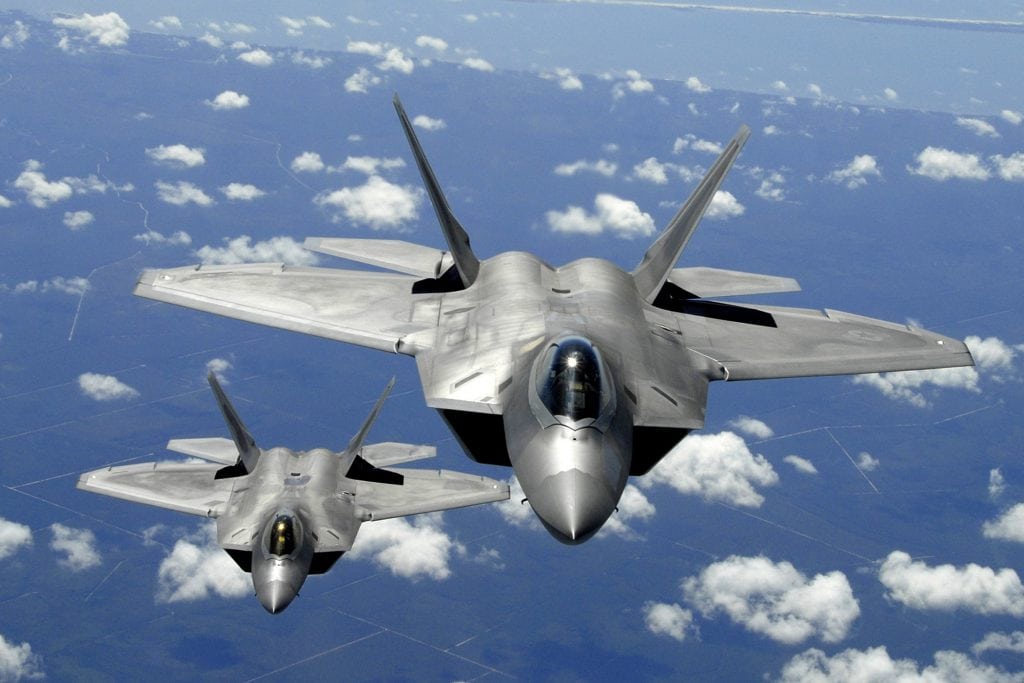
Two F-22 Raptors fly above Florida’s Tyndall Air Force base. (U.S. Air Force, photo by Thomas Meneguin)
Lockheed Martin said on Wednesday that it has received a $270 million U.S. Air Force contract to integrate the Infrared Defensive System (IRDS) on the company’s fifth-generation F-22 Raptor fighter.
The company said that IRDS has a number of “newly developed” tactical surveillance, reconnaissance, and tracking sensors “to enhance aircraft survivability and lethality.”
“In addition to managing integration of IRDS on the F-22, the company will also support integration on other platforms,” Lockheed Martin said.
While the Air Force’s manned Next Generation Air Dominance (NGAD) fighter has an uncertain future, the service is moving forward with upgrading sensors on the F-22.
Last August, the Air Force awarded RTX‘s Raytheon a nearly five-year contract that could be worth more than $1 billion for work in McKinney, Texas to upgrade sensors for the F-22.
The Air Force plans to retire its older, 32 Block 20 F-22s, but is undertaking a program to upgrade the remaining 154 F-22 Raptors with new cryptography, an expanded open architecture, new weapons, the infrared search and track sensor, and a “Project Keystone” effort to install an advanced threat warning receiver.
The program is to cost more than $4.3 billion between fiscal 2023 and 2029.
“The F-22 team is working really hard on executing a modernization roadmap to field advanced sensors, connectivity, weapons and other capabilities that are relevant to the INDOPACOM theater,” Air Force Brig. Gen. Jason Voorheis, the program executive officer for fighters and advanced aircraft, said last July.
“The Raptor team recently conducted six flight test efforts to demo and assess advanced sensors on the F-22 required to complete an ongoing rapid prototyping MTA for the program,” he said. “That will lead to a decision on the rapid fielding MTA in the near future.”
MTA refers to Middle Tier of Acquisition, which is also a reference to rapid prototyping.
Lockheed Martin CEO James Taiclet has pushed back on the views of the world’s richest man and top Trump adviser Elon Musk, the founder of SpaceX, who has said that manned fighters are a relic in the age of drones.
“I’m pretty sure that a $25,000 drone will have no effect on a Chinese J-20 [fighter] jet,” Taiclet said at the Reagan National Defense Forum in Simi Valley, Calif., last month. “When you see 400 J-20s coming across the Taiwan Strait, you better have 200 NGADs or F-35s or F-22s to meet them, or you will lose, and you will lose right away.”
A version of this story originally appeared in affiliate publication Defense Daily.